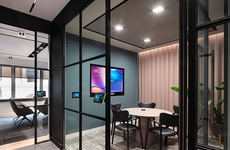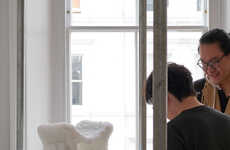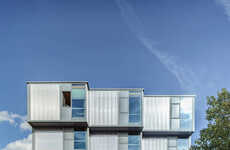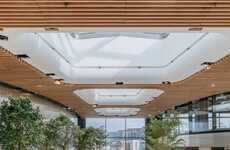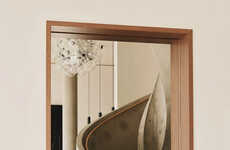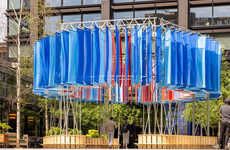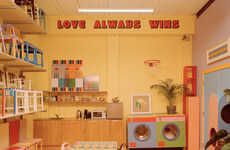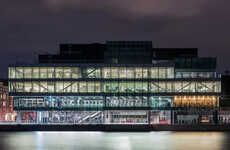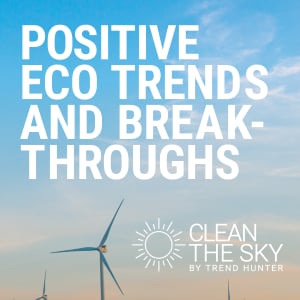
The Design District Opened on London's Greenwich Peninsula
Elena Rahman — September 17, 2021 — Art & Design
References: designdistrict & dezeen
The Design District in London is officially open to the public. The cluster of workspace buildings aims to create an encouraging and inspiring area for creatives. Located on the Greenwich Peninsula near the Rogers Stirk Harbour + Partners-designed O2 events arena, the Design District includes workspaces for 1,800 people.
Made up of 16 buildings, the District features architectural designs from several firms such as SelgasCano, 6a Architects, Adam Khan Architects, Barozzi Veiga, David Kohn Architects, Mole Architects, Architecture 00, and HNNA. Each designer was responsible for creating two of the 16 buildings, creating a variety of architectural styles. The goal was to replicate the city's wide range of buildings rather than a sense of district unison.
Image Credit: Design District
Made up of 16 buildings, the District features architectural designs from several firms such as SelgasCano, 6a Architects, Adam Khan Architects, Barozzi Veiga, David Kohn Architects, Mole Architects, Architecture 00, and HNNA. Each designer was responsible for creating two of the 16 buildings, creating a variety of architectural styles. The goal was to replicate the city's wide range of buildings rather than a sense of district unison.
Image Credit: Design District
Trend Themes
1. Creativity-focused Workspace Clusters - The rise of shared and creatively inspiring workspace clusters presents an opportunity for businesses to tap into collaborative and innovative environments.
2. Architectural Diversity - The trend towards a variety of architectural styles in commercial design presents opportunities for businesses to break free from traditional design constraints and encourage bolder, more innovative architectural designs.
3. Location-centric Design - The trend towards designing workspaces to fit within the surrounding urban landscape presents opportunities for businesses to create holistic environments that fuse nature, industry, and culture.
Industry Implications
1. Architecture and Design - The increasingly diverse range of design approaches to commercial spaces presents opportunities for architects and designers to challenge traditional conventions and develop innovative new spaces.
2. Real Estate and Property Development - The trend towards creativity-focused workspace clusters presents an opportunity for developers and real estate professionals to tap into the growing market of businesses looking to leverage collaborative, inspiring work environments.
3. Creative Industries - The rise of creativity-focused workspace clusters presents opportunities for creative professionals to access inspiring and collaborative workspaces designed to fuel innovation and creative output.
3.4
Score
Popularity
Activity
Freshness

